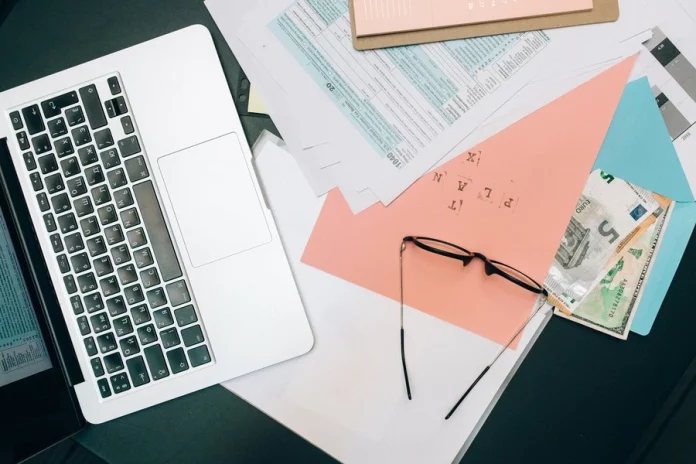Taxes are crucial for the running of any country. A big and powerful country like the US needs taxes to pay its employees and run its projects.
You need to know how to pay taxes like a good citizen. Tax returns are an essential part of the tax collection process, and you must send them on time.
When filing your tax returns, you need to ensure you have all the documents. These are important for cash processing, which could put you in a mess. Let us see what you need to file and the type of envelope you can use for tax returns;
Can I Mail My Tax Return In A Regular Envelope?
You can mail your returns in a regular envelope if they fit. Make sure to seal the envelope with the appropriate postage or stamps.
A 6 by 9-inch envelope is a popular choice, but you can get away with a smaller size if the forms fit. It will be best to get a special form to file the 1099-NEC.
How Do You Send Your Taxes By Mail?
Filing taxes can get complicated, and you might pay fines if you don’t get it right. You can mail your taxes, but it’s not always easy.
You might wonder about the order the forms go in, whether you have to take them to the post office, etc.
You need to know the correct way to mail your taxes to the IRS. Let us get into the details and help you out;
1. Assembling the return
You need to start with printing all the forms, schedules, and relevant attachments. You will do this for both federal and state forms if you need to.
Make sure you date and sign the return where you need to. Place the form 1040 on top of the stack and other attachments and forms behind it.
When assembling the forms, you will see the schedule number or name. You need to follow the sequence number on the left. Assemble the forms going from the smallest number to the largest number.
Attach any additional statements at the back of your packet. Staple the entire packet on the top left. If you have federal tax withheld, W-2s, 1099s, or other forms, staple them on the first page.
2. Assembling the envelope
The next thing you should know is where to send the return based on your mailing address. To do this, go to IRS.go and select file. Select where to file and then where to file addresses based on States in the following window.
You can then select your state to get the right address. If you owe and are sending payment, use the ARE ENCLOSING PAYMENT option.
If the IRS owes you a refund or you can’t send in a payment, use the ARE NOT ENCLOSING PAYMENT option.
Ensure there is a return address on the envelope if the form gets lost. You can send it via USPS certified mail receipt, so you have proof of the mail. Include the mailing address and the name, year, and form number on the receipt.
These will prove what you mailed if you have an issue with the IRS. You can have proof of failing, and USPS enables you to track the return.
3. Sending the mail
If you live inside the US, you can use the US postal service to send your mail. You can leave it in your mailbox like other mail, but it might get lost. Additionally, you won’t have any way to prove you send the return.
Public mail service is a choice, but the mail might end up late even if you filed it in time. This might be because of how often the mail agents come to your place and their route.
To be safe, send the returns early to allow time for delivery, even in worst-case scenarios. You can drive to the post office to be safe and ensure the mail moves quickly.
It would be best to consider using a private delivery service. These are safer and often quicker, and you have ways to prove you filed the tax returns. They have the documentation you can use to track the envelope and prove what it contains.
How Do You Prove the IRS Got Your Returns?
You might mail your returns on time, but the IRS is not exactly the best at handling forms. It is common for them to lose your forms and say they didn’t get them. Even if you can prove you sent the forms, you can’t prove what was in the envelope.
You can do extra steps when mailing the forms to keep these from happening. Attaching additional letters and return receipts may be tedious, but they can prove helpful for refunds.
Attach a return letter to the mail
After filing everything, including a letter on top of the package. The letter should have a date, return address, the mailing address, and what will be inside.
In the letter, detail everything in the envelope in a list. Have the agent return a copy of the letter to you with a date stamp to prove they received the envelope. You should attach a self-return envelope to the original envelope for the letter.
The IRS employee will date stamp the letter and send it back to you. This will prove that the IRS received your mail. You can prove they had it, and you had all the correct forms in the envelope, saving you from fines.
Request the return receipt
This is an option when you use certified mail. Send the mail with the return receipt request. Complete it with your return address and include the address of where you are sending the mail. Select certified mail on the envelope.
Peel the removable edge off the certified mail piece and attach it to the return envelope. Cover the number that says article number transfer from the service label. The envelope has a sticky part at the back, peel them off and attach it to your letter’s back.
This will prove who received the mail and when they got it. With these two pieces of documentation, you can prove the IRS had your mail, and you won’t pay any fines. The best way to file returns is using an E-file. It is faster, easier and you don’t have to go to the post office.
IRS Penalties For Filing Tax Returns Late
Have you ever submitted your tax returns late? You need to understand how the IRS calculates interests and penalties if you file your taxes late.
Let us get into the details and show you what penalties to expect if you don’t file your taxes on time;
The IRS sets a deadline for Individual income tax filing. You need to try your best to get all your files to the IRS by this date. If you can’t make it, you will need to file an individual 6-month extension.
If you file the extension, you can miss the deadline for filing the tax returns, but you have to pay the taxes.
If you miss the filing date, you may owe the IRS a late filing penalty. A late filing penalty depends on how much taxes you owe, and it’s not a guarantee.
You will not owe the IRS a penalty if they owe you a tax refund and you miss the filing deadline. The late filing penalty is 5% of the total tax you owe each month. This means the money will increase by 5% up to 25% within 5 months.
If you file more than 60 days late, the minimum payment due will be 100% of unpaid taxes. If you don’t pay your taxes on time, you will pay late payment penalties. You will owe these penalties even if you file for an extension.
The late payment penalty for the IRS is half a percent of the total tax due for each month. This sum also goes to 25% of the total taxes.
If you get both late penalty and late payment fees simultaneously, the IRS will waive the late payment fee.
This means you won’t have to pay both penalties in one month. The IRS will tack interests onto any tax payments you miss.
They will compound the interest daily, and the current rate is 5%. By not filing in time, you will owe the IRS more money.
Conclusion
Can I mail my tax returns in a regular envelope? You now know that you can send the tax returns to the IRS in any envelope, provided it has the correct addresses. Make sure it is a good-sized envelope, so the forms stay neat.
You can use a regular postal service to send the envelope to the IRS. Using private carriers like FedEx might be a better choice. They have netter systems that might be helpful should the IRS lose your papers. Always have proof of your filed tax returns in such a situation.












